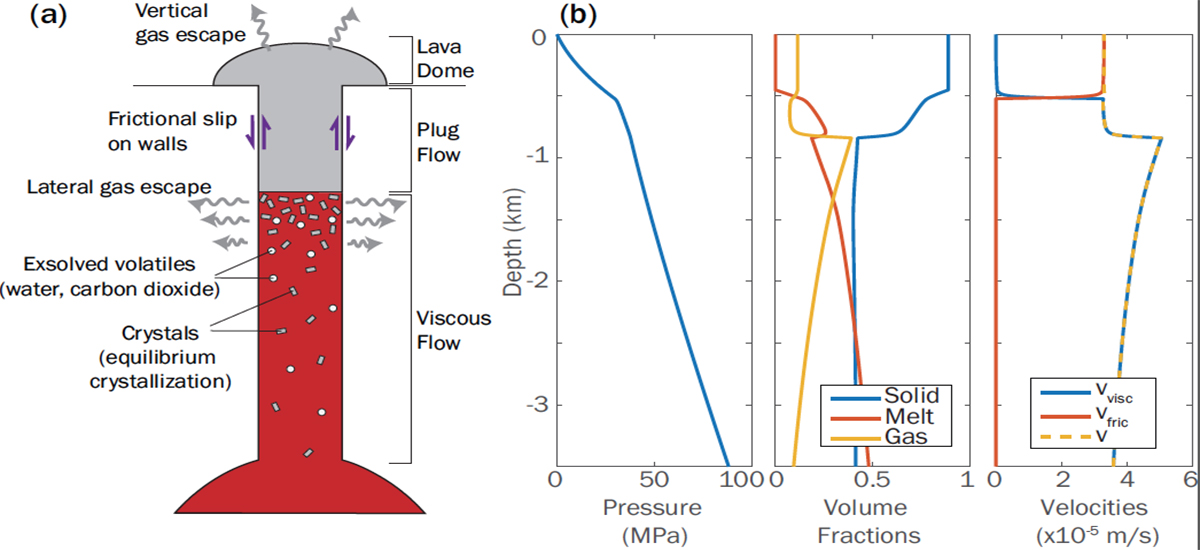Science Nugget - By Paul Segall (Stanford University), Ying-Qi Wong (Stanford University), Kyle Anderson (U.S.G.S.) - NSF # EAR 1358607 | 2014-2017
Physics-based models of volcanic eruptions have grown more sophisticated over the past few decades. These models, combined with Bayesian inversion, offer the potential of integrating diverse geological and geophysical datasets to better understand volcanic systems. We extend the 1D cylindrical conduit model of Anderson and Segall (2011) to include both vertical and lateral gas loss, as well as pressure-dependent equilibrium crystallization (Figure 1a). As pressure decreases, melt crystallizes and water and CO2 come out of solution (Figure 1b). Newtonian flow dominates at depth, but as crystallization occurs during ascent, the viscosity increases until the viscous resistance to flow exceeds the rate-dependent frictional strength on the conduit wall, at which point the magma transitions from viscous flow to plug flow. At shallow depths, frictional sliding on the conduit wall dominates. We compare steady-state solutions to the dome-forming eruption of Mount St. Helens in 2005 (Wong et al., 2015). Markov Chain Monte Carlo (MCMC) is used to estimate magma chamber pressure, volatile content, and mechanical properties required to fit observed porosity, exit velocity, and depth of drumbeat earthquakes. Future work will employ time-dependent solutions with continuous GPS and extrusion flux data to constrain vital unknowns such as magma chamber volume.
Top figure: (a) Physics-based conduit model. (b) Some depth-dependent properties inferred by solving the physics-based conduit model. As magma ascends and depressurizes, the solid volume fraction increases due to crystallization, in part causing the velocity to change from viscous flow to frictional sliding.
References
Anderson, K., and P. Segall (2011), Physics-based models of ground deformation and extrusion rate at effusively erupting volcanoes, Journal of Geophysical Research: Solid Earth, 116(7), 1{20, doi:10.1029/2010JB007939.
Wong, Y. Q., P. Segall, K. Anderson, and A. Bradley (2015), Bayesian inversion using physics-based models applied to dome extrusion at Mount St Helens 2004-2008, in AGU Fall Meeting





